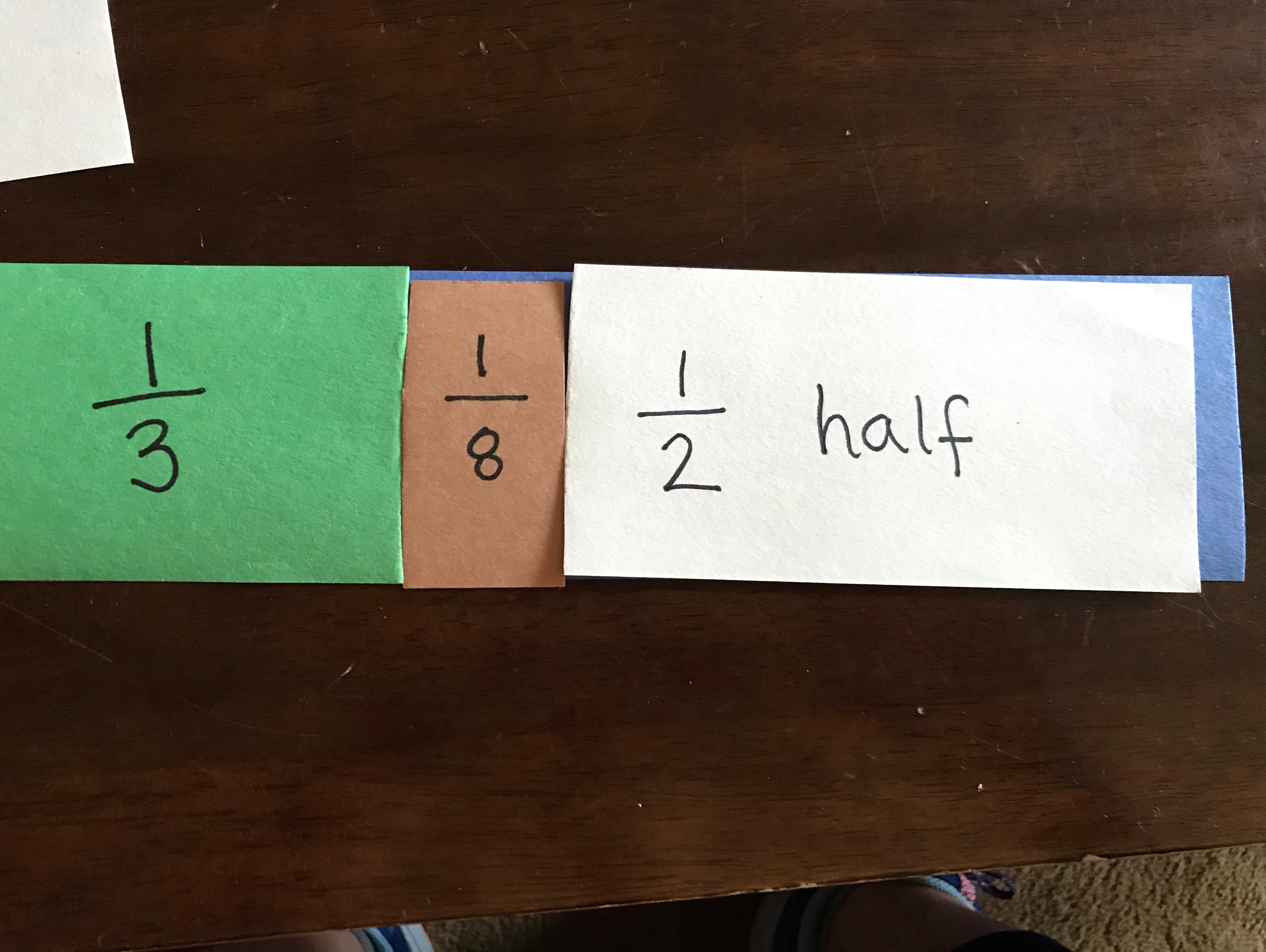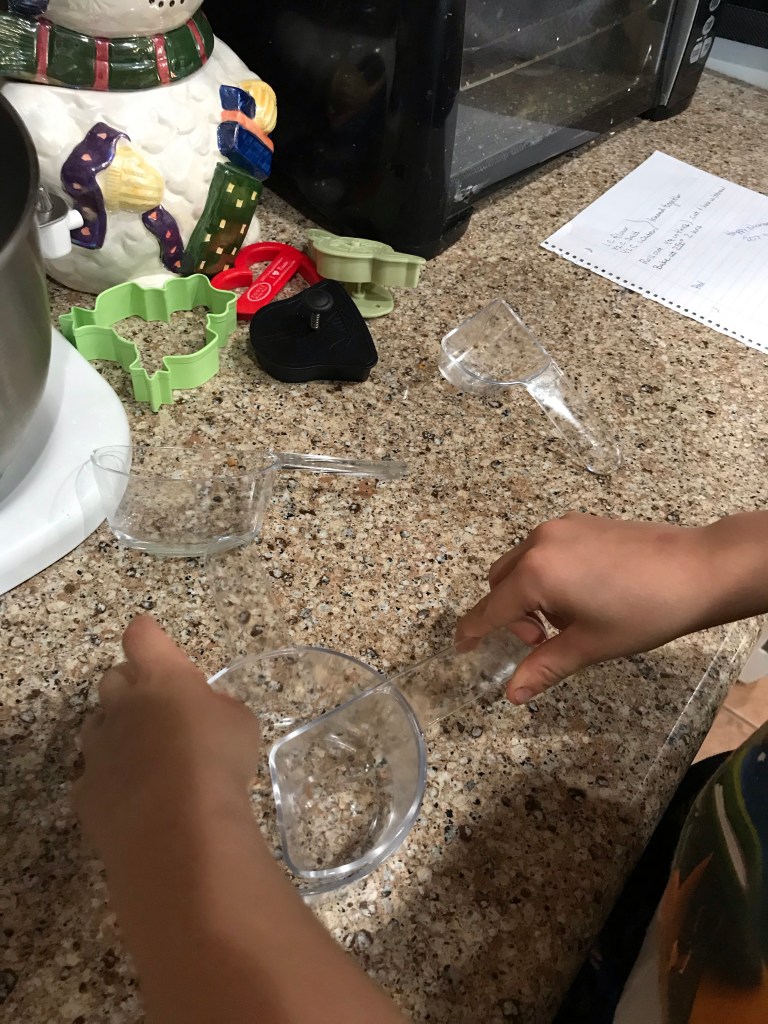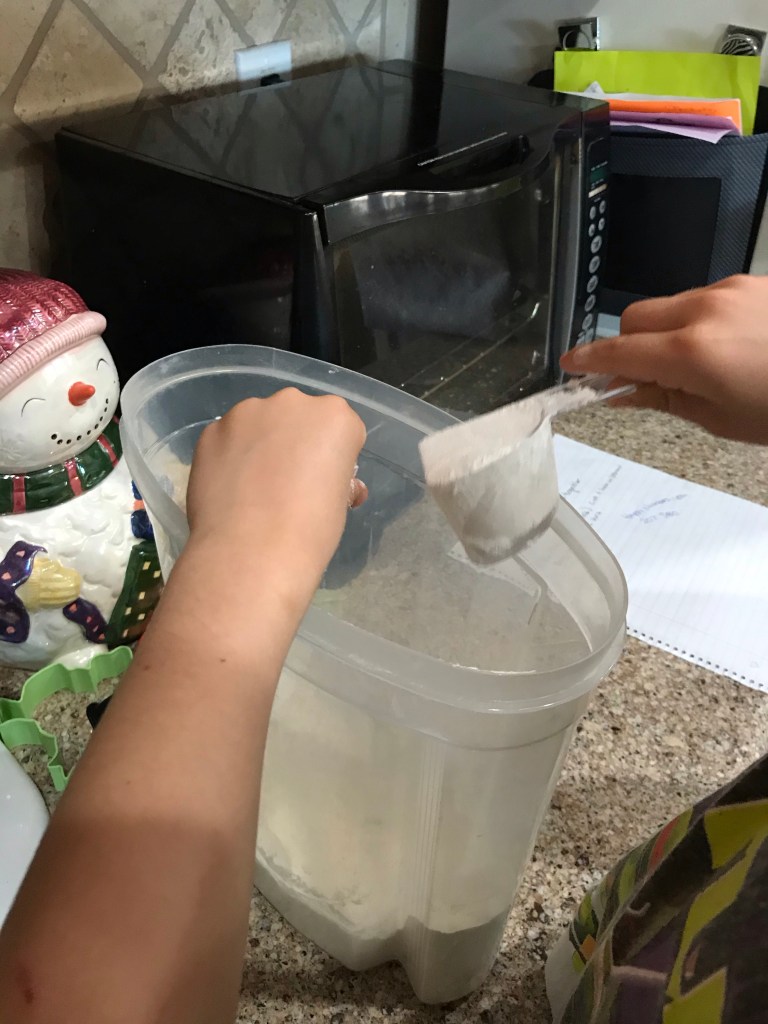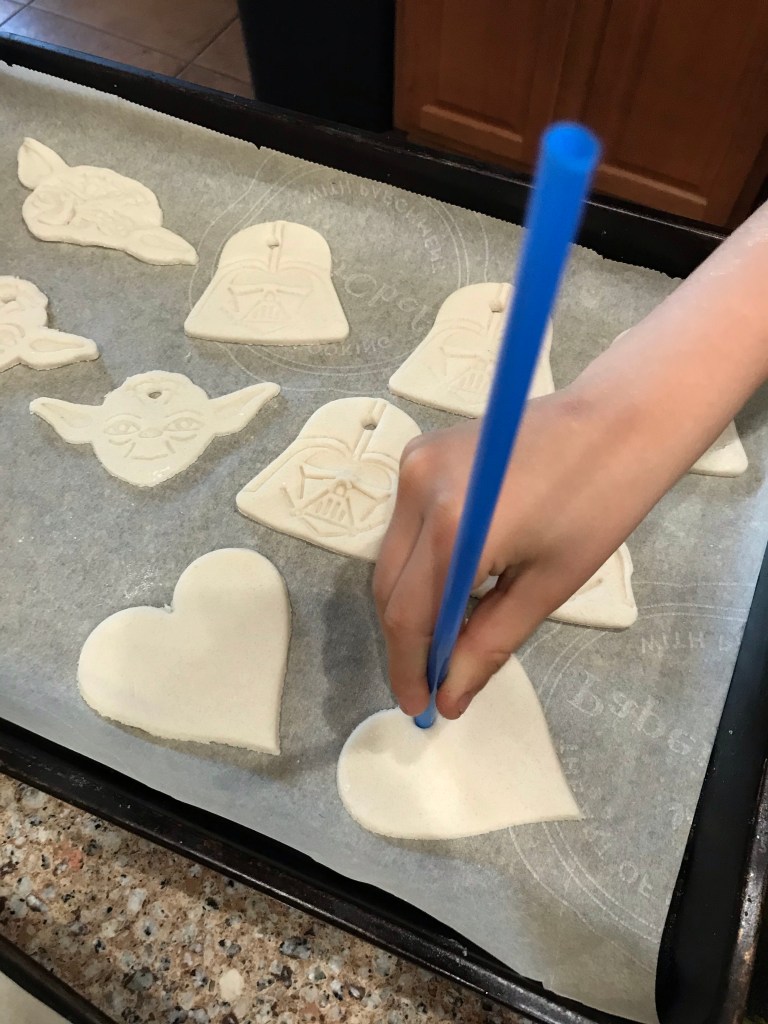No pun intended. We are at the end of our exploration of initial fraction ideas. Even though I am a mathematics educator, and have been for over 20 years, this experience has taught me a few things.
- NEVER underestimate a child. Though I knew what answers or ideas I wanted, they were not always what I got. And often, his answers and ideas were simpler and quite frankly, better.
- Time, Time, TIME! Give lots of time to build these critical foundational concepts. Just when I thought, “He’s got this!”, the next day I would question and he would hesitate. Children need lots of time to practice, to play, to explore, and to find how to say and think about the ideas themselves.
- Wait Time is not only necessary; it is CRITICAL. There were so many videos I cringe when hearing it again. Those times when I should have just sat quiet, and waited for him to work it out. The wait time isn’t awkward for him; it’s awkward for me. When I did just take a swig of coffee (instead of butting into his thinking) the thoughts he figured out were amazing.
- “Mommy, this was FUN!” We often have a running joke in middle and high school where we say fractions are our friends (and not the other f-word). So many students are traumatized by the lack of understanding they have with fractions. Yet here is my 8 yo asking to play games, to cook, and to learn about fractions. Because it made sense to him. Because he got time to process and practice. Because he understood the relationships and how to utilize those relationships to make meaning.
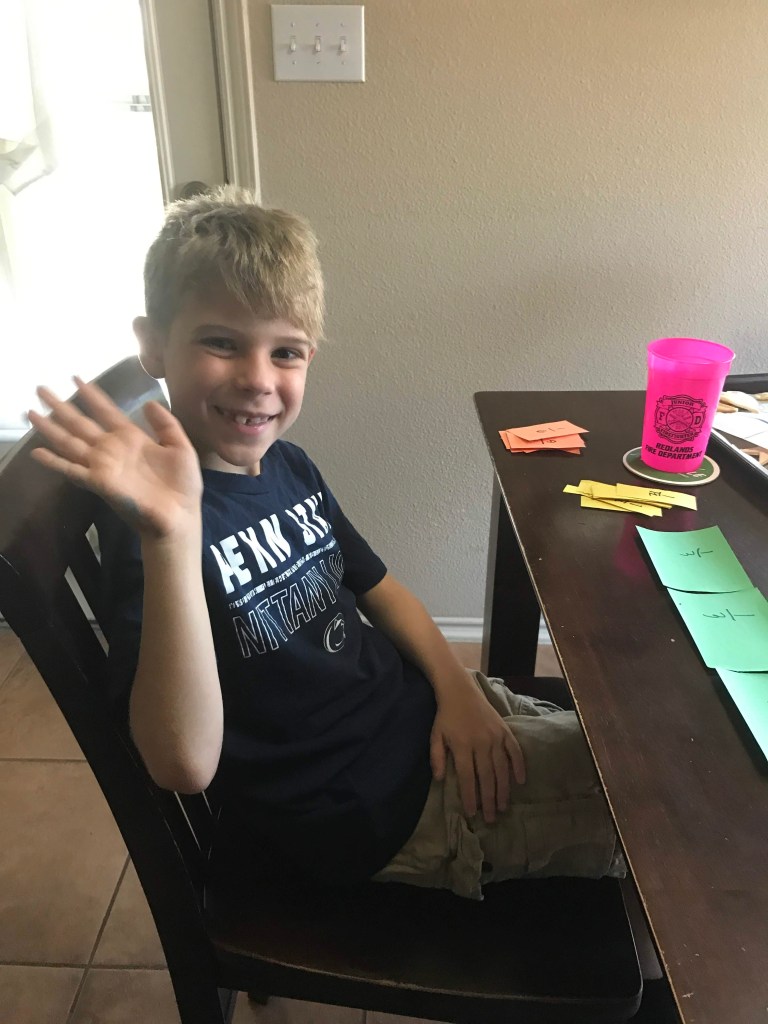
We are on to measurement and I hope to revisit equivalence, addition and subtraction of fractions in May. I hope you were able to enjoy this journey with your little(s) as much as we did. 🙂
Take care of each other, stay home, and stay healthy.
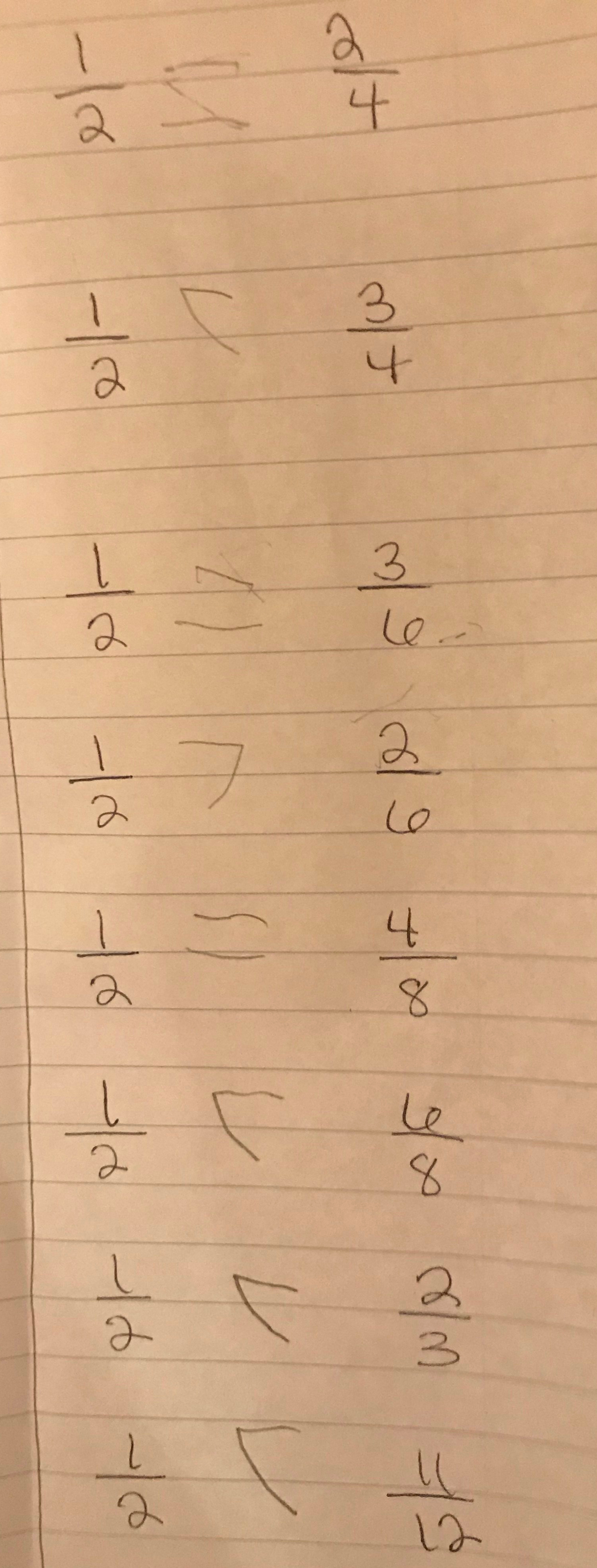
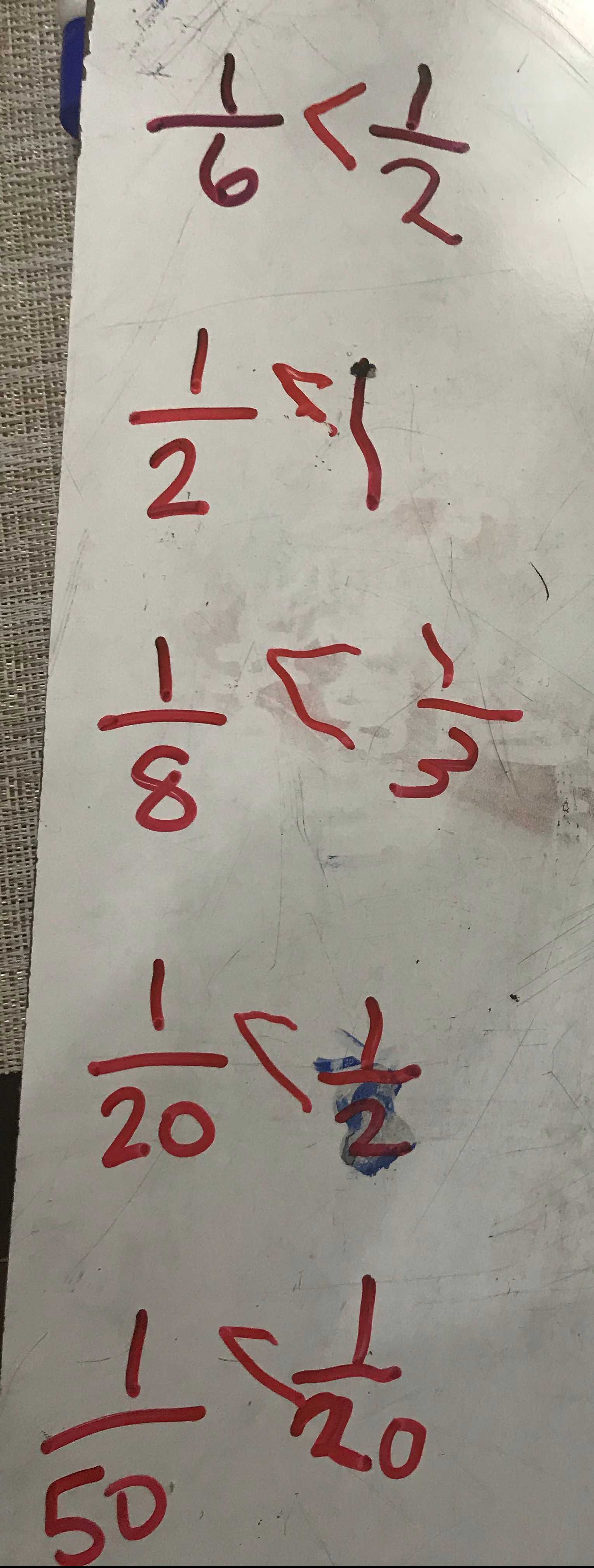
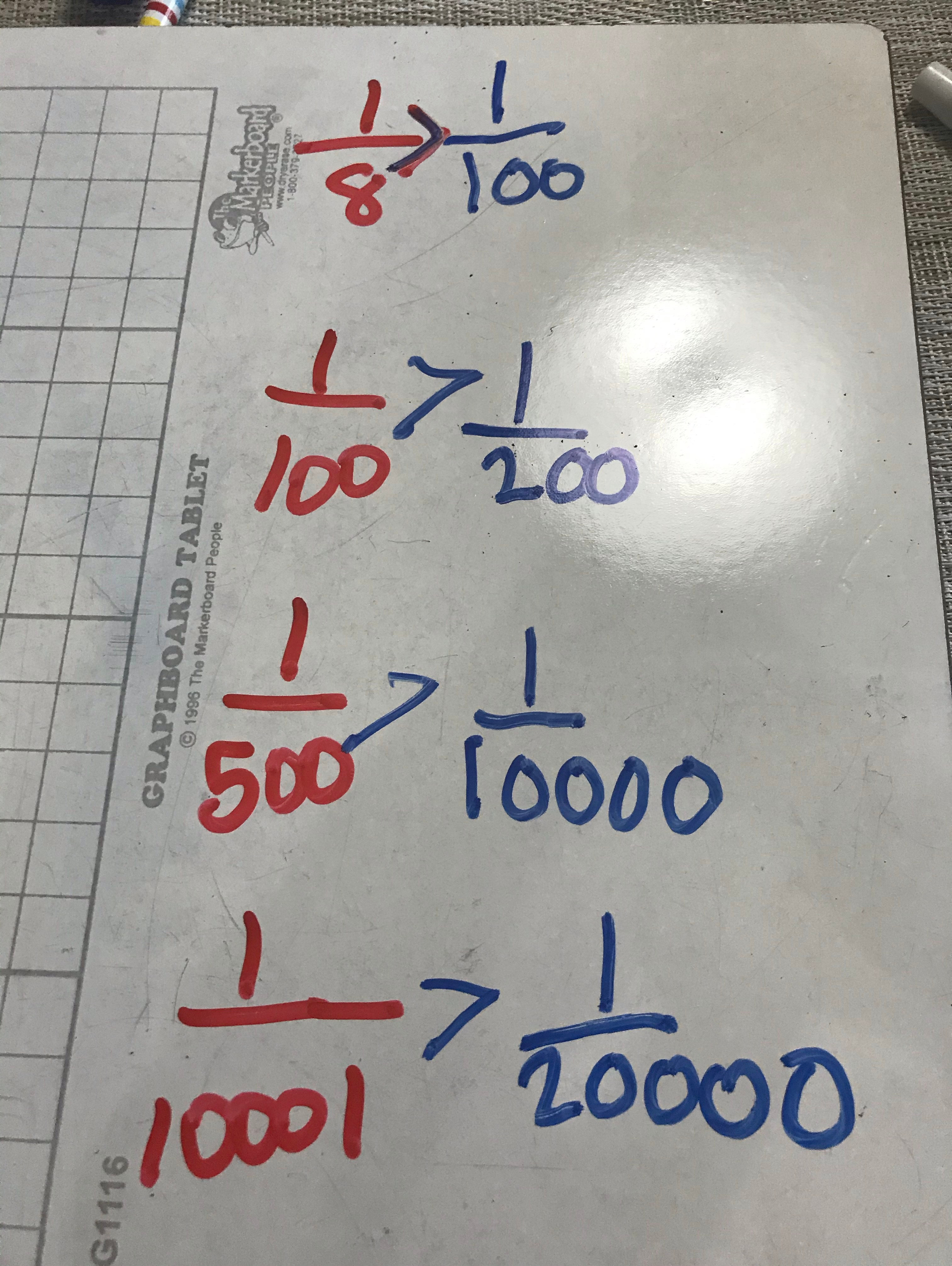
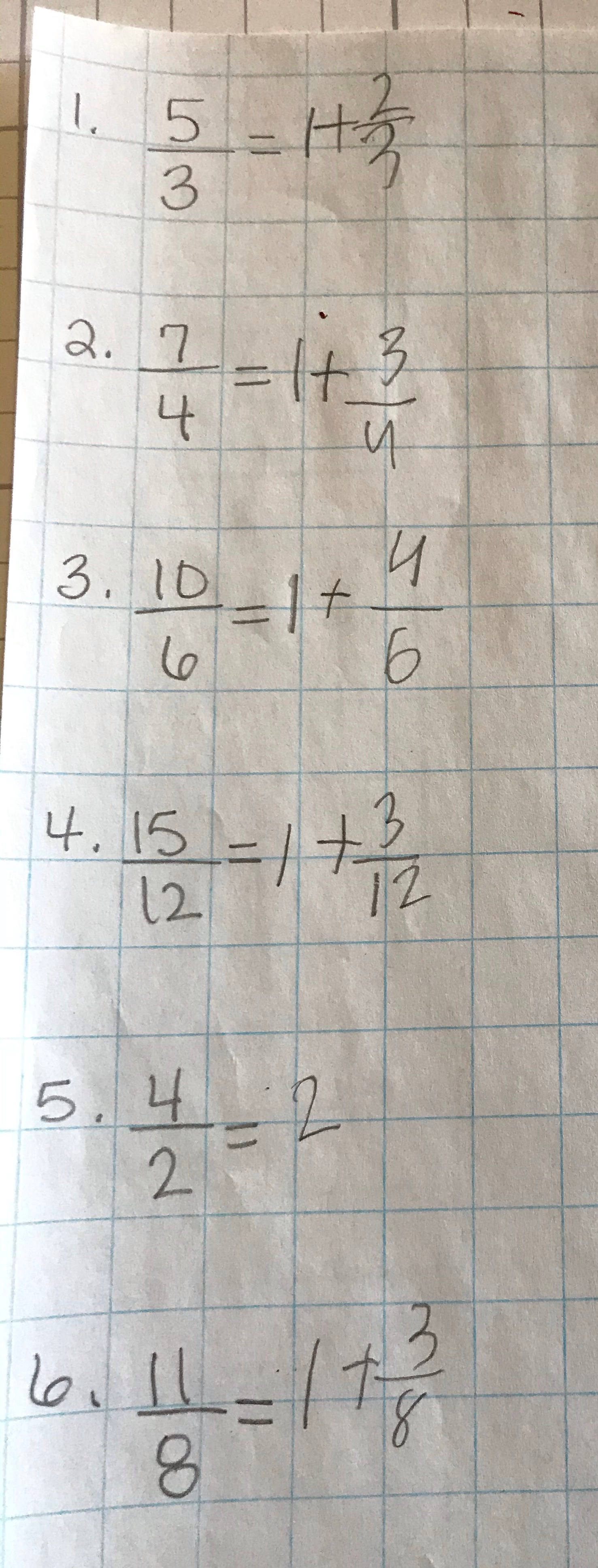
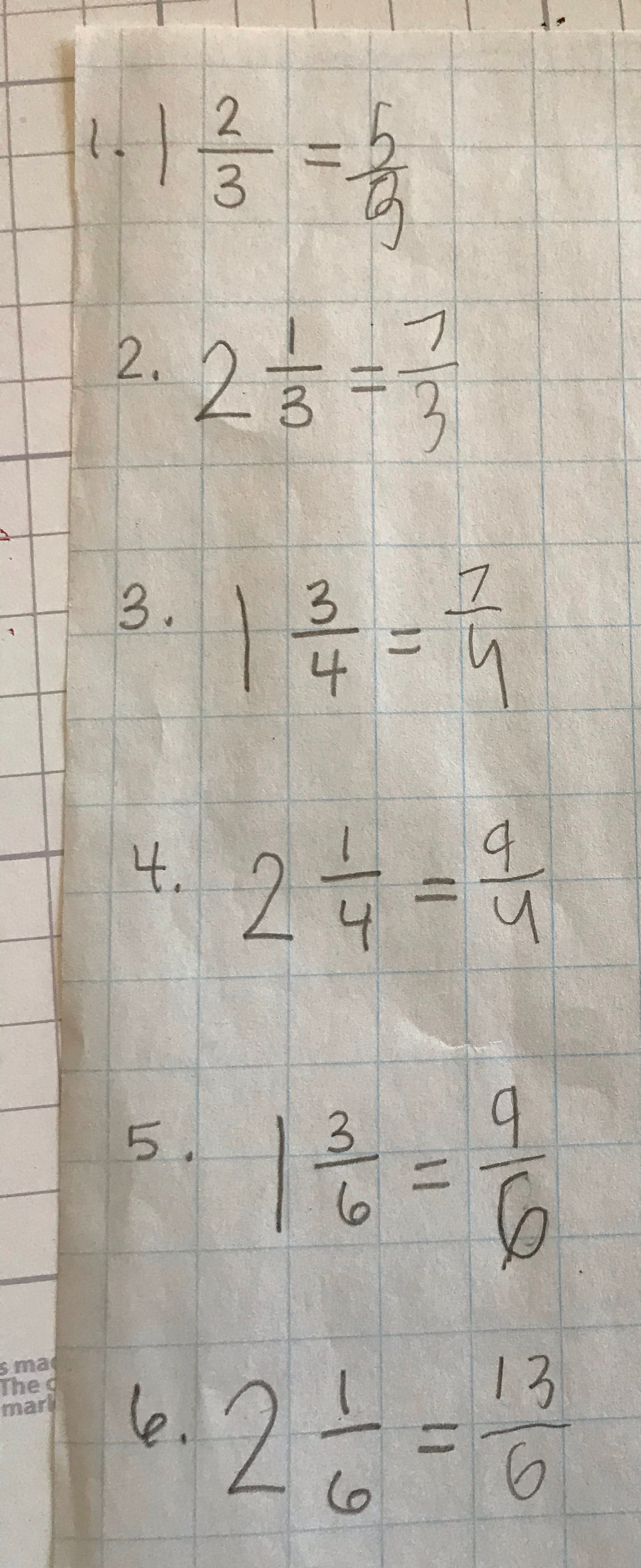
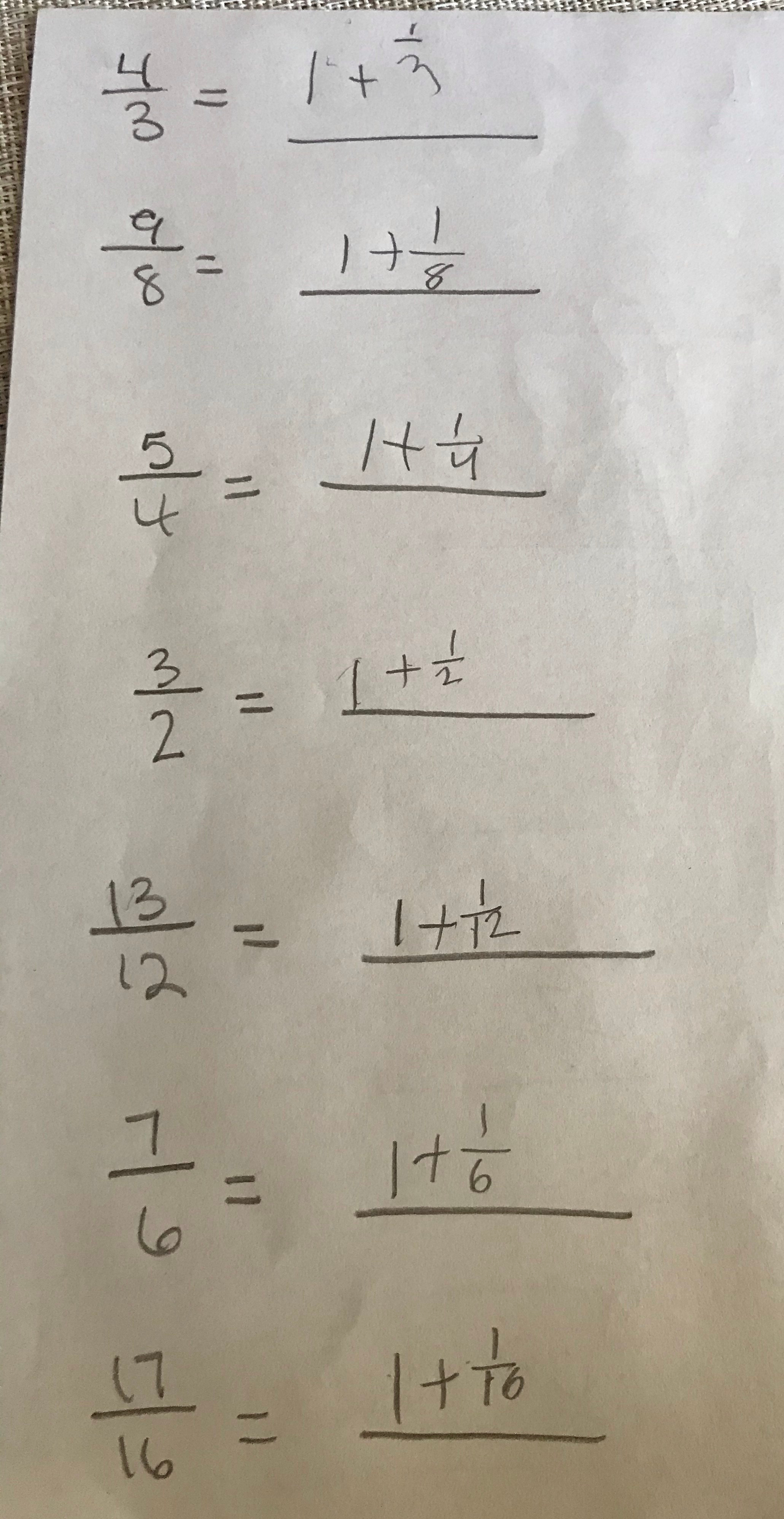
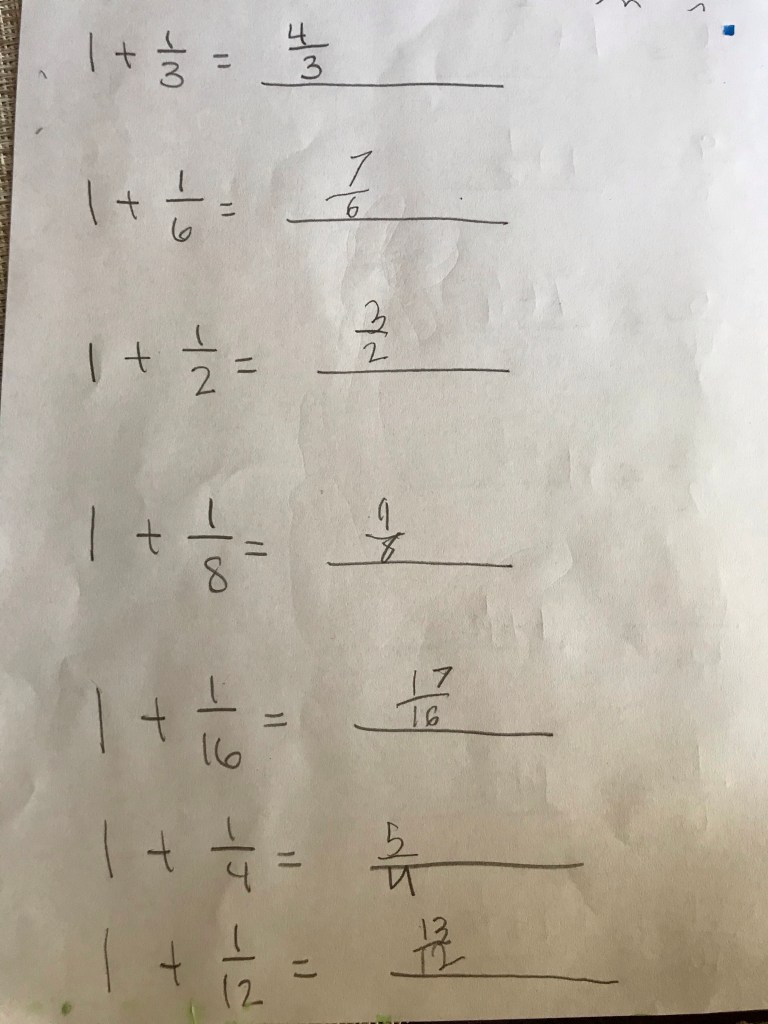


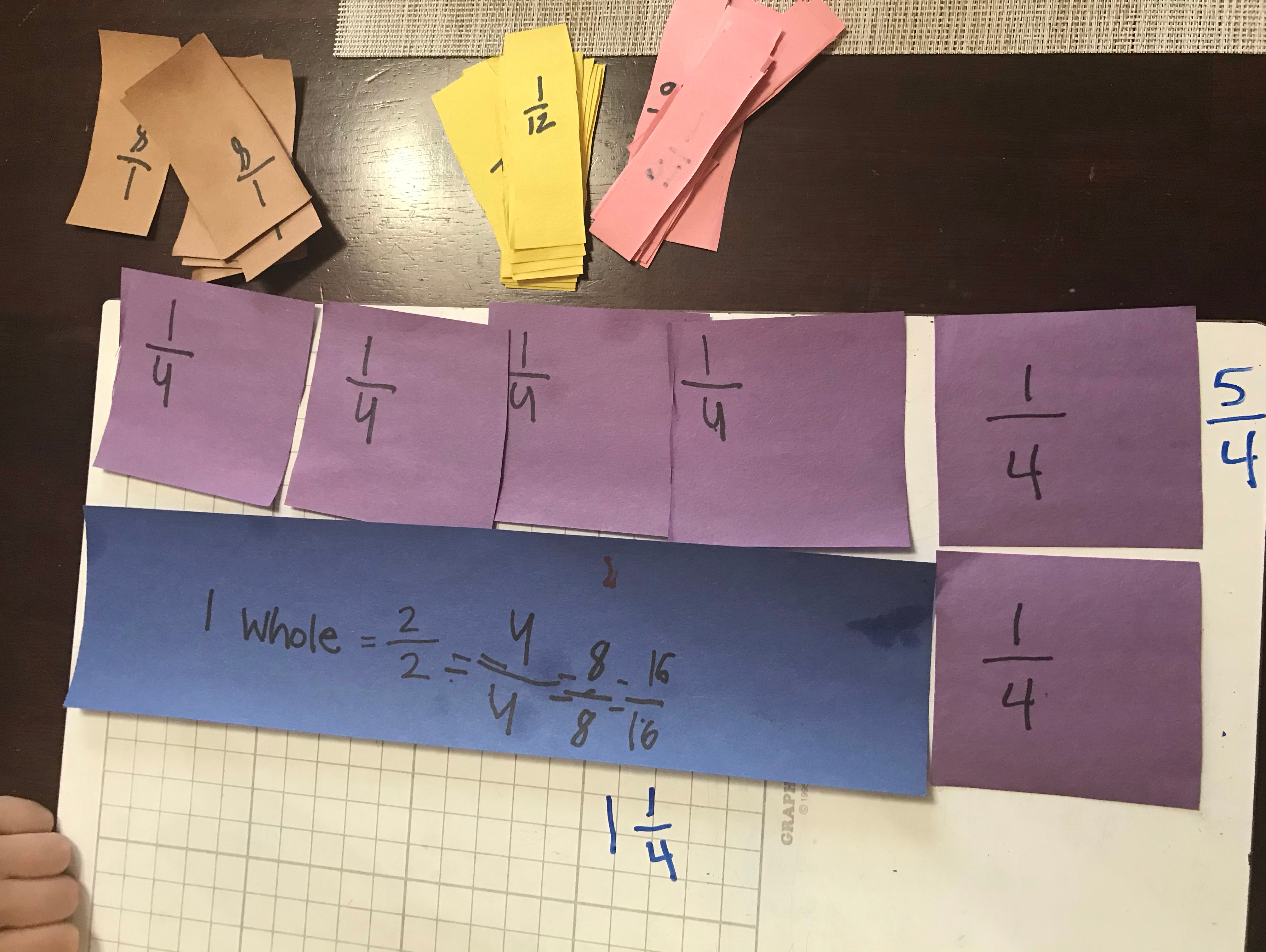
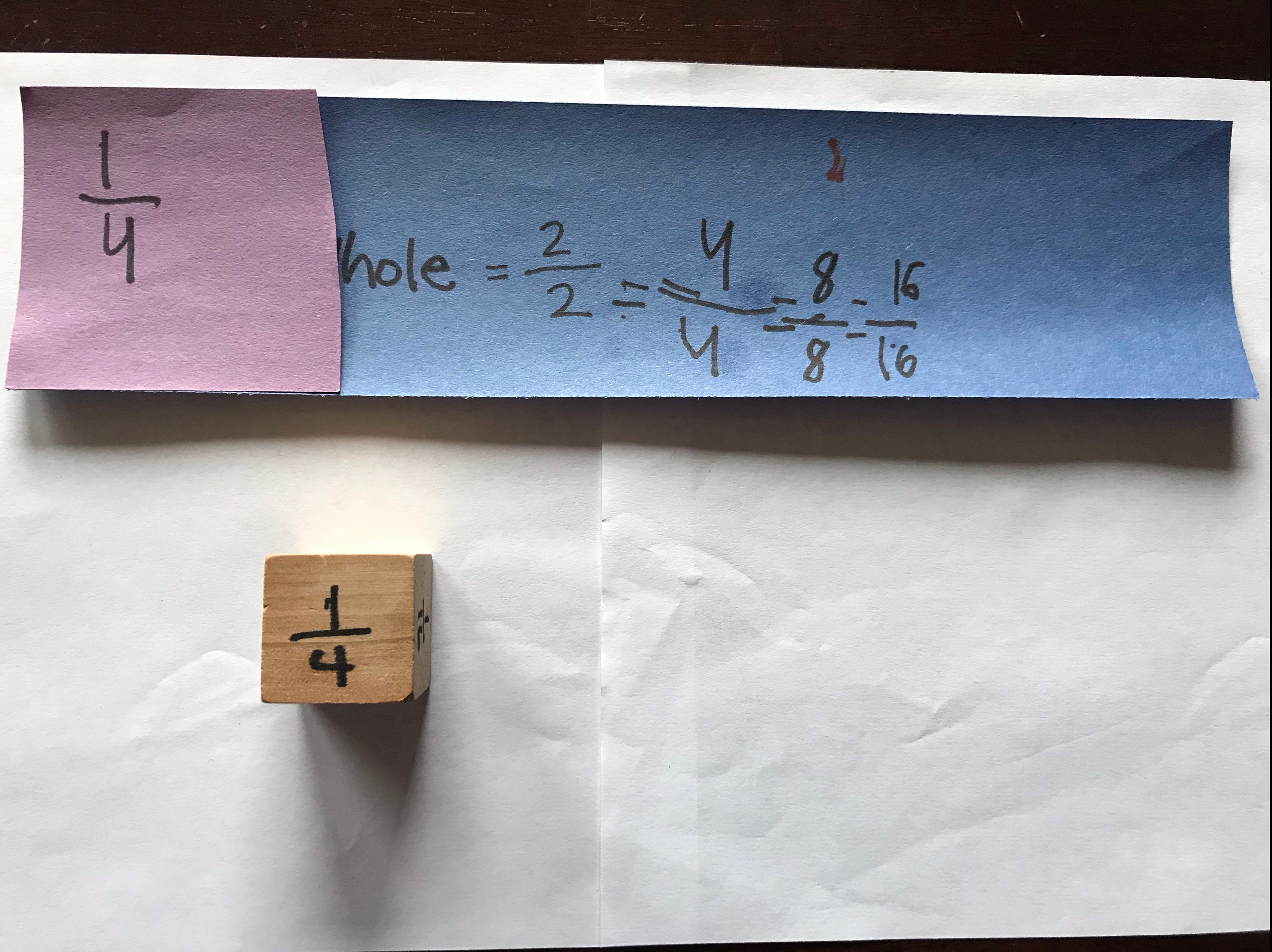
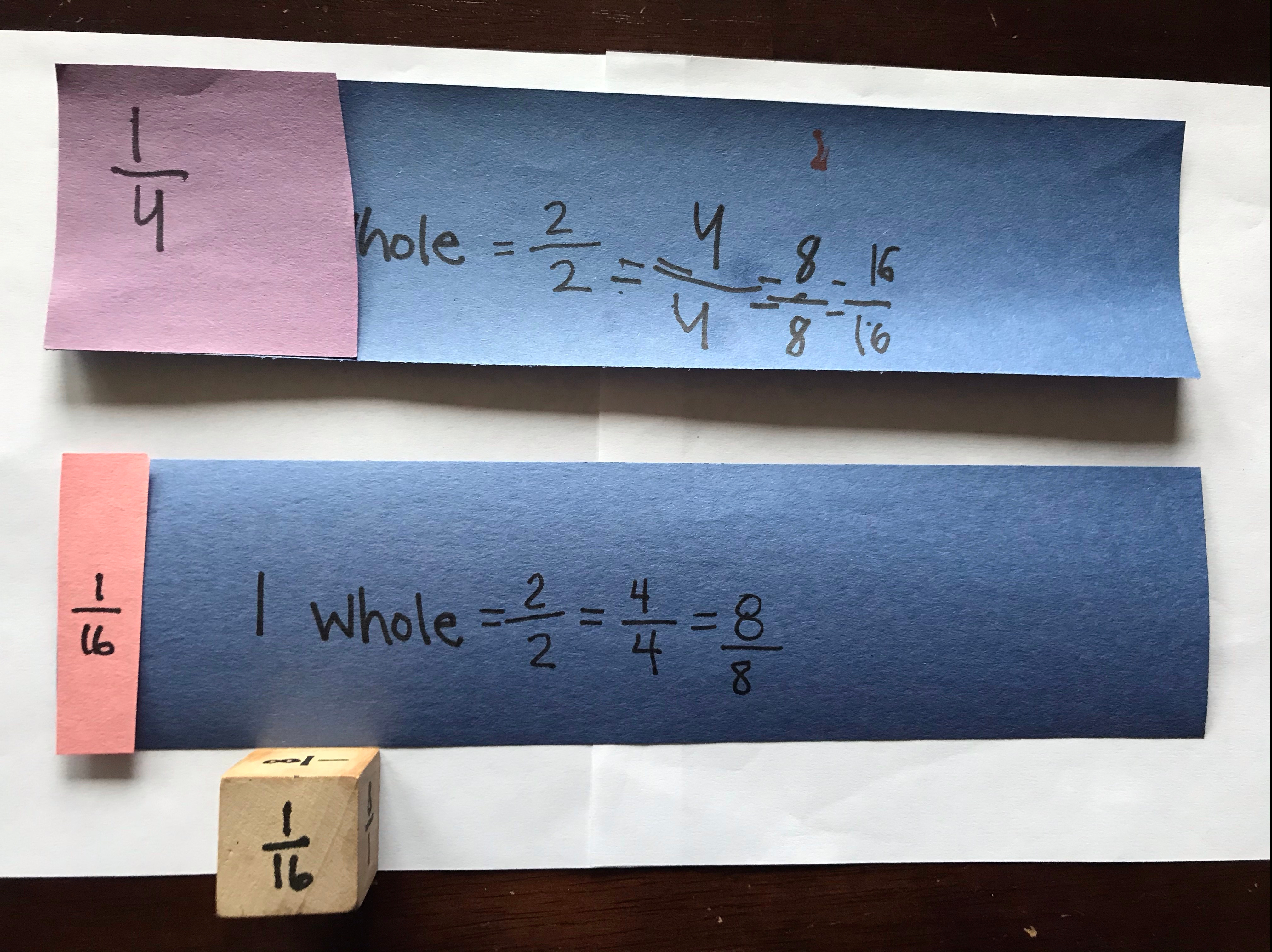 Who has covered up more of their 1 whole? (In our game, Chris had.) How do you know? (Chris originally said, “Because purple is bigger than pink.” I restated, “Oh, so you mean 1/4 is bigger than 1/16?” This helps them start visualizing the size of pieces and prepare for comparing.)
Who has covered up more of their 1 whole? (In our game, Chris had.) How do you know? (Chris originally said, “Because purple is bigger than pink.” I restated, “Oh, so you mean 1/4 is bigger than 1/16?” This helps them start visualizing the size of pieces and prepare for comparing.)
